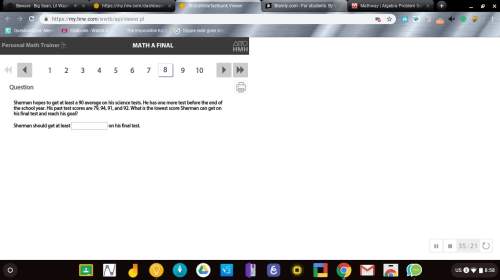1: What are the dimensions of the finished Perkatio?
2: What kind of material was used to make...

Mathematics, 03.05.2020 13:13 Tsumiki
1: What are the dimensions of the finished Perkatio?
2: What kind of material was used to make the product ?
3: How much floor space would it take up in your house?
4. If you were lazy and didn't want to paint your walls, how much space could you avoid
painting if the Perkatio was placed in the corner of the room?
5. How many levels was the Perkatio ?
6. Which version do you like better? Doors or no doors ?
7. If the entire Perkatio was screened in what would be the amount of screening needed
in square feet?
8. What is the total volume of the Perkatio?
9. How many ball out balls do you think would fit inside the Perkatio?
10. Would it be more economical to build the Perkatio out of pine or pvc pipes ? Why

Answers: 1


Other questions on the subject: Mathematics

Mathematics, 21.06.2019 15:30, leeenaaa95
On a architect's drawing of a house, 1 inche representa 1.5
Answers: 1

Mathematics, 21.06.2019 21:40, joeykyle05
Write the contrapositive of the conditional statement. determine whether the contrapositive is true or false. if it is false, find a counterexample. a converse statement is formed by exchanging the hypothesis and conclusion of the conditional. a) a non-converse statement is not formed by exchanging the hypothesis and conclusion of the conditional. true b) a statement not formed by exchanging the hypothesis and conclusion of the conditional is a converse statement. false; an inverse statement is not formed by exchanging the hypothesis and conclusion of the conditional. c) a non-converse statement is formed by exchanging the hypothesis and conclusion of the conditional. false; an inverse statement is formed by negating both the hypothesis and conclusion of the conditional. d) a statement not formed by exchanging the hypothesis and conclusion of the conditional is not a converse statement. true
Answers: 1

Mathematics, 21.06.2019 23:30, bbby2
Aprisoner is trapped in a cell containing three doors. the first door leads to a tunnel that returns him to his cell after two days of travel. the second leads to a tunnel that returns him to his cell after three days of travel. the third door leads immediately to freedom. (a) assuming that the prisoner will always select doors 1, 2 and 3 with probabili- ties 0.5,0.3,0.2 (respectively), what is the expected number of days until he reaches freedom? (b) assuming that the prisoner is always equally likely to choose among those doors that he has not used, what is the expected number of days until he reaches freedom? (in this version, if the prisoner initially tries door 1, for example, then when he returns to the cell, he will now select only from doors 2 and 3.) (c) for parts (a) and (b), find the variance of the number of days until the prisoner reaches freedom. hint for part (b): define ni to be the number of additional days the prisoner spends after initially choosing door i and returning to his cell.
Answers: 1

Mathematics, 21.06.2019 23:30, ameliaduxha7
What is the explicit rule for the sequence in simplified form? −1,−4,−7,−10,−13… an=4−5n an=−4−3n an=2−3n an=−6−5n
Answers: 1
You know the right answer?
Questions in other subjects:



Mathematics, 23.10.2020 18:20




Arts, 23.10.2020 18:20



Mathematics, 23.10.2020 18:20




